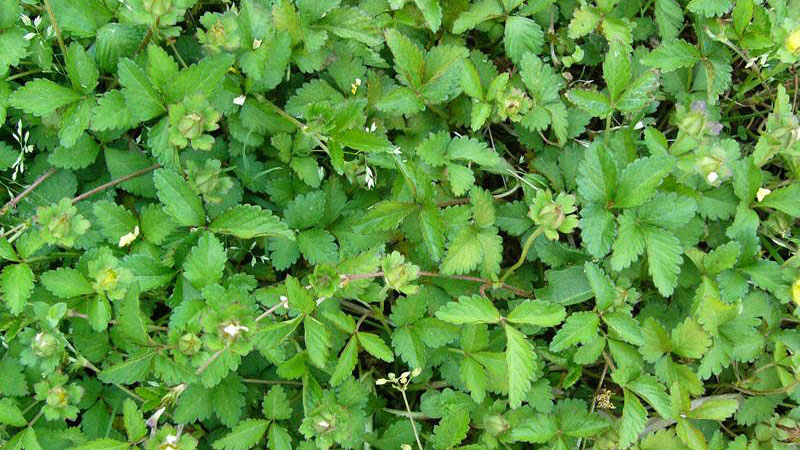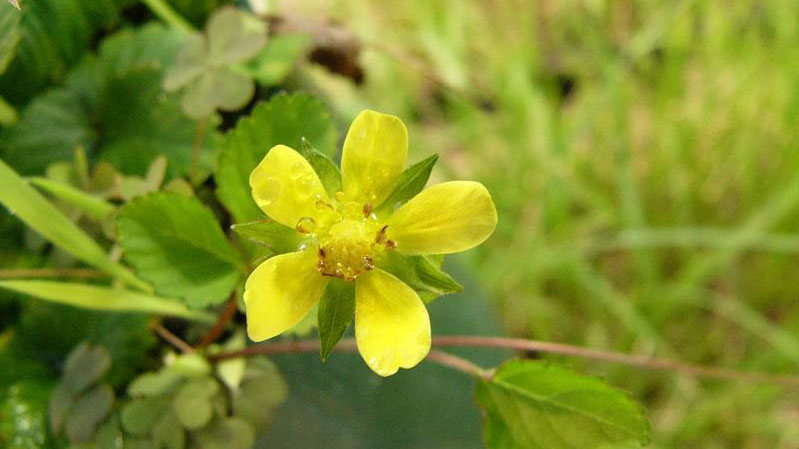Indian Mock Strawberry
en Español / em Português
El inglés es el idioma de control de esta página. En la medida en que haya algún conflicto entre la traducción al inglés y la traducción, el inglés prevalece.
Al hacer clic en el enlace de traducción se activa un servicio de traducción gratuito para convertir la página al español. Al igual que con cualquier traducción por Internet, la conversión no es sensible al contexto y puede que no traduzca el texto en su significado original. NC State Extension no garantiza la exactitud del texto traducido. Por favor, tenga en cuenta que algunas aplicaciones y/o servicios pueden no funcionar como se espera cuando se traducen.
Português
Inglês é o idioma de controle desta página. Na medida que haja algum conflito entre o texto original em Inglês e a tradução, o Inglês prevalece.
Ao clicar no link de tradução, um serviço gratuito de tradução será ativado para converter a página para o Português. Como em qualquer tradução pela internet, a conversão não é sensivel ao contexto e pode não ocorrer a tradução para o significado orginal. O serviço de Extensão da Carolina do Norte (NC State Extension) não garante a exatidão do texto traduzido. Por favor, observe que algumas funções ou serviços podem não funcionar como esperado após a tradução.
English
English is the controlling language of this page. To the extent there is any conflict between the English text and the translation, English controls.
Clicking on the translation link activates a free translation service to convert the page to Spanish. As with any Internet translation, the conversion is not context-sensitive and may not translate the text to its original meaning. NC State Extension does not guarantee the accuracy of the translated text. Please note that some applications and/or services may not function as expected when translated.
Collapse ▲Description
Indian mock strawberry (Potentilla indica) is a perennial, spreading by hairy stolons (runners). Leaflets are toothed and hairy with long, hairy petioles with leaf-like stipules (basal appendages). Single flowers with five yellow petals are borne on long stalks from the leaf axils. The fruit is red and fleshy and similar in appearance to the commercial strawberry though smaller and tasteless. It is similar in appearance and growth habit to wild strawberry, but it has yellow flowers instead of white and teeth on leaf edges are rounded rather than sharp-pointed.
Cultural Control
Improving surface drainage, aerating when needed, and watering infrequently will help reduce Indian mock-strawberry encroachment.
Species Data
- GROWTH SEASON / LIFE CYCLE
- perennial weed
- GROWTH HABIT
- LEAFLET NUMBER
- three; first few leaves are simple, rest are trifoliates
- LEAF MARGIN
- roundish teeth
- LEAF HAIRS
- dense hairs on upper surface
- LEAF / LEAFLET SHAPE
- LEAF WIDTH
- 1⁄2 - 2 inches
- LEAF VENATION
- pinnate
- LEAF ARRANGEMENT
- alternate
- ROOT TYPE
- fibrous; note also the stolons associated with this plant
Figure 13
- fibrous; note also the stolons associated with this plant
- FLOWER COLOR

















